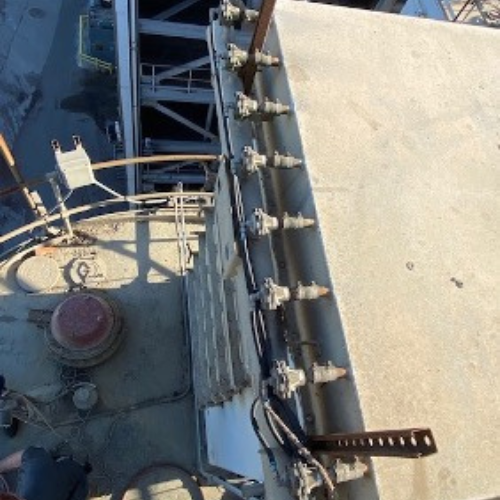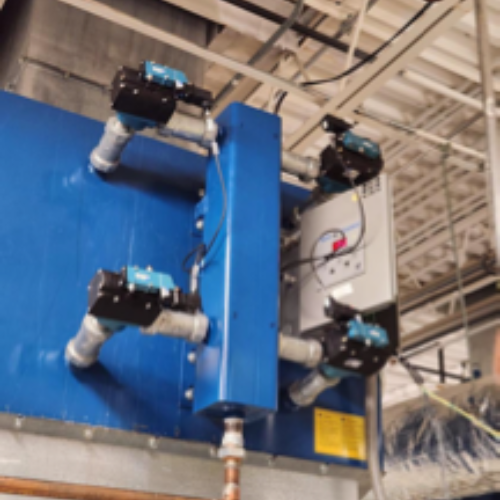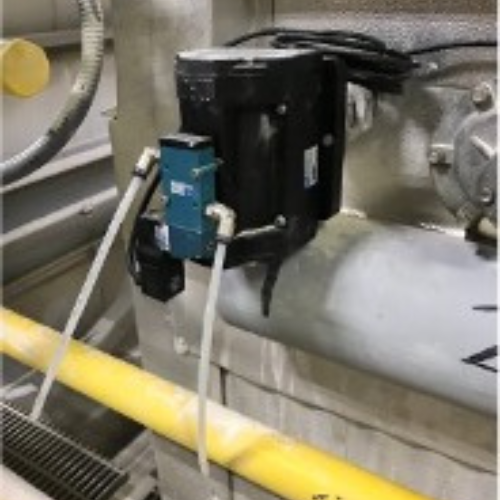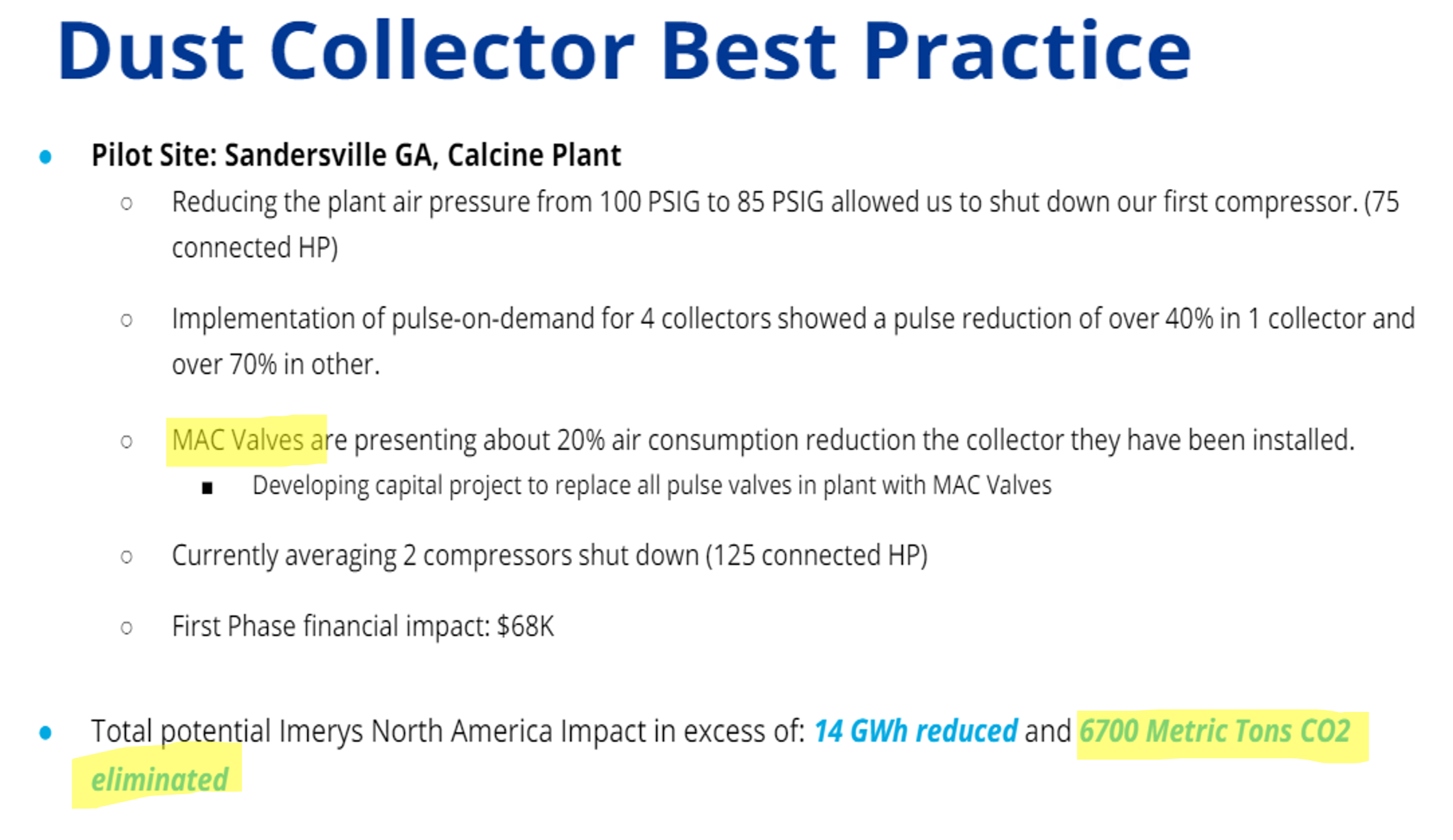By Paul Anderson, VP of Sales, Adams
At Adams, our mission is to provide value-added solutions for pneumatic, hydraulic, and automation systems. Over the last 60 years, we’ve partnered with manufacturers to identify inefficiencies and implement strategies that drive energy savings and improve operational sustainability. One of the key areas we’ve focused on in recent years is dust collection—a crucial but often overlooked aspect of industrial operations.
In this blog, I’ll share insights from a recent presentation I gave at the Manufacture Alabama 2024 HR, Safety, and Environmental Conference, where I broke down the inner workings of dust collectors, common inefficiencies, and the significant energy and cost savings potential. I’ll also highlight real-world case studies that underscore the impact of these improvements.
Understanding Dust Collectors and Common Inefficiencies
Dust collectors serve three primary purposes:
- Controlling emissions to meet EPA regulations.
- Improving indoor air quality to comply with OSHA standards.
- Acting as process dust collectors, integral to manufacturing systems like cement milling.
The most common system we encounter is the pulse jet baghouse, which uses compressed air to clean filters. Unfortunately, these systems often operate inefficiently, leading to excessive energy consumption and maintenance costs.
Key inefficiencies include:
- Pressure Increases: Operators compensate for poor performance by raising system pressure, increasing energy demand.
- Increased Pulse Frequency: Pulsing filters more frequently accelerate wear and energy usage.
- Extended Pulse Duration: Keeping valves open longer wastes compressed air without improving cleaning efficiency.
- Premature Filter Replacement: Filters are often replaced unnecessarily due to inefficiencies elsewhere in the system.
Innovative Valve Technology: A Game-Changer
Traditional diaphragm valves, a decades-old technology, are a major source of inefficiency. These valves often fail in an open position, causing continuous air loss. At Adams, we’ve introduced MAC Pulse Valve Technology, which offers several key advantages:
- Fails Closed Design: Prevents continuous air loss in the event of a failure.
- Optimized Pulse Efficiency: Delivers higher pressure with shorter, more effective bursts.
- Extended Filter Life: Reduces wear and tear on filters, minimizing replacements and landfill waste.
Case Studies: Real-World Impact
1. Food Manufacturing: Improved Filter Longevity

In a sugar processing facility, we replaced traditional valves with MAC valves on just one filter row. After three weeks, filters on the MAC valve row were noticeably cleaner, demonstrating the immediate benefits of this technology.
2. Pharmaceutical Plant: Energy and Cost Savings

For a pharmaceutical manufacturer, we reduced air consumption by 74% on a single dust collector, saving $5,000 annually on energy costs and $2,400 on filter replacement.
3. Steel Mills: Dramatic Reductions in Energy Waste

In two steel mills, we achieved:
- $66,000 in savings by reducing valve on-time.
- $120,000 saved by eliminating air leakage from worn-out diaphragm valves.
4. Gypsum Plant: A/B Testing for Validation

A gypsum plant compared two identical systems—one with traditional valves and one upgraded with MAC valves. The upgraded system cut operating costs by 80%, validating the ROI of the new technology.
5. Corporate-Wide Initiative: Emirates Case Study

Emirates, a global manufacturer, adopted MAC valves across its facilities. By lowering operating pressure and implementing pulse-on-demand technology, they:
- Reduced air consumption by 20%.
- Eliminated 67,000 metric tons of CO₂ annually.
- Saved 14 gigawatt-hours of energy.
This initiative earned them recognition from the DOE and serves as a model for corporate-wide sustainability programs.
Opportunities for Your Facility
These examples illustrate how modernizing dust collection systems can deliver measurable savings and sustainability benefits. Whether it’s reducing compressed air consumption, extending filter life, or improving operational reliability, the potential impact is significant.
If you’re looking to optimize your systems, I encourage you to assess your current dust collection setup. Are inefficiencies driving up your energy costs? Are you replacing filters more often than necessary? Let’s have a conversation about how we can help you achieve similar results.
At Adams, we’re committed to helping our customers operate smarter, greener, and more cost-effectively. Reach out to explore how we can tailor these solutions to your unique needs.
Watch the full video of the presentation here.
Paul Anderson, Vice President of Sales
Helping manufacturers maximize efficiency and sustainability since 2010.

